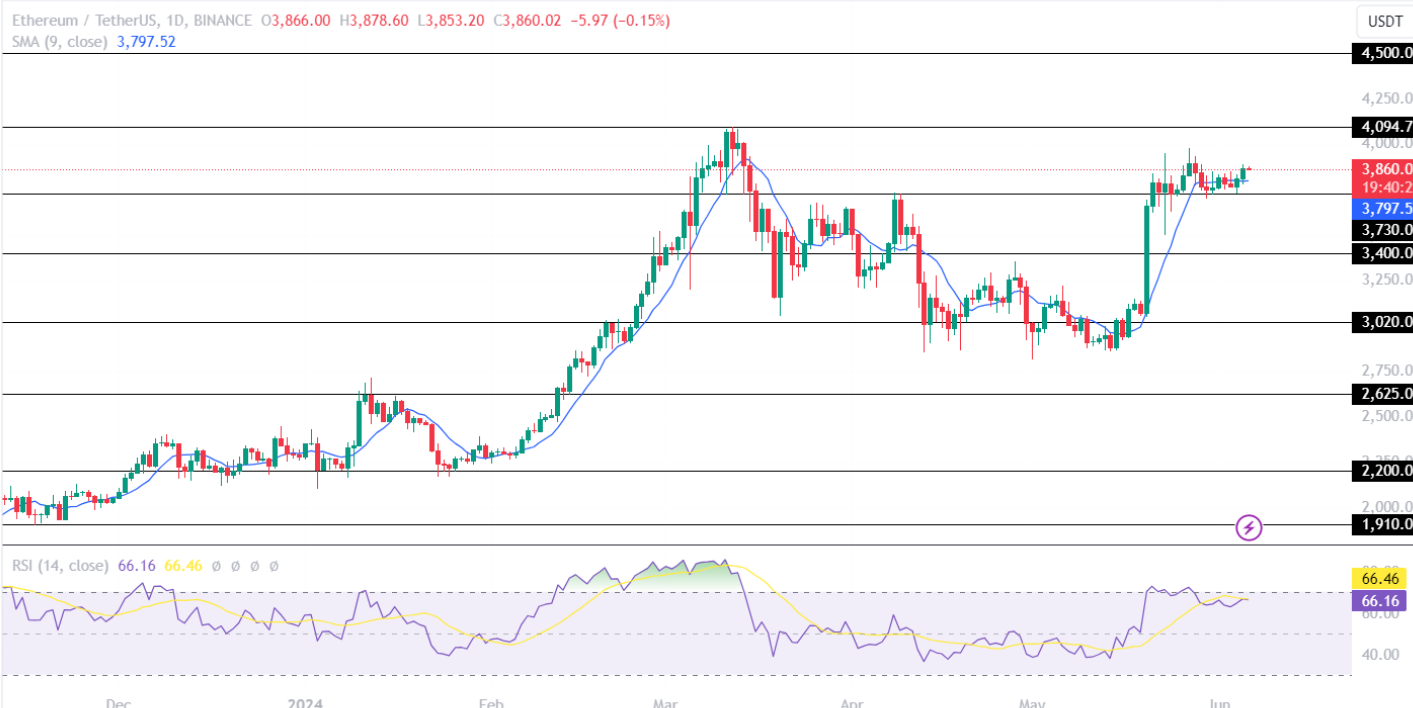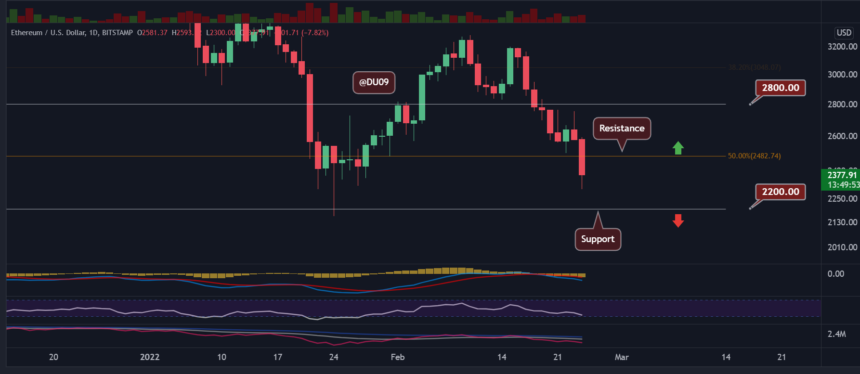With its second-largest market capitalization among cryptocurrency prices, Ethereum (ETH) has lately experienced a notable price drop and reached the bearish objective of $1,500. Regarding Ethereum’s future course, the drop has generated questions among analysts and investors. Many ask whether Ethereum can recover from this downturn or if the bear market will likely last since its price has reached this critical level.
Ethereum Faces Market Volatility
Ethereum is trading at a little over $1,500 as of April 2025, a marked decline from its late 2024 highs. Once with a constant price above $3,000, ETH has been finding it challenging to retain value in the face of more general market volatility. With multiple technical indicators pointing to a further decline, Ethereum has reached a crucial support level since this fall.

Ethereum’s price swings nowadays run between $1,465 and $1,608, suggesting ongoing market volatility. On the other hand, this volatility is not unusual in the bitcoin market since quick price swings are frequent. Though the present gloomy attitude exists, traders and analysts still argue about Ethereum’s future, given the several elements causing its recent decline.
Ethereum’s Price Drop
Several essential elements have helped Ethereum to develop its present bearish trend and explain its price fall.
Ethereum’s Rising Competition
The long-ruling smart contract and distributed application (dApp) scene is Ethereum. Nevertheless, other blockchain systems that provide faster transaction speeds and reduced fees now pose a serious challenge.
Because they can grow rapidly and offer better performance for distributed finance (DeFi) systems, rivals including Solana, Avalanche, and more recent initiatives like Sui have been attracting traction. Furthermore, many developers and users of Ethereum have started looking for other platforms due to continuous scaling problems, especially with transaction prices and network congestion. The emergence of these other blockchains has directly affected Ethereum’s market share and price.
Ethereum ETF Struggles
Originally supposed to increase demand for ETH, Ethereum’s exchange-traded funds (ETFs) have presented difficulties. Meanwhile, these ETFs have seen ongoing net outflows as investors choose to keep and stake ETH directly, producing a staking yield of roughly 3%. This inclination for staking instead of ETFs has helped to lower demand for investment products based on Ethereum.
Moreover, the volatility connected with ETH has made it less appealing for confident institutional investors, particularly those looking for more consistent and predictable returns. Ethereum ETFs’ lack of demand has further pressured their price downward.
Bearish Ethereum Outlook
Predicting future price movements in financial markets depends on technical analysis, and in Ethereum’s case, the charts indicate possible further falls. Investors have been alarmed by a triple-top pattern developed in 2024, whereby ETH failed to breach the $4,036 resistance barrier thrice. Usually showing a reversal of the uptrend, this pattern has been followed by a significant price drop.
Moreover, Ethereum’s price has exceeded important support levels, including the $2,113 mark, thus increasing more selling pressure. Usually leading to price declines, the 50-week and 200-week Exponential Moving Averages (EMAs) have also crossed, a technical indication sometimes referred to as a “death cross. Furthermore, suggesting continuous bearish momentum are the Relative Strength Index (RSI) and the Moving Average Convergence Divergence (MACD).
Ethereum’s Future Outlook
Like many cryptocurrencies, the Ethereum price has seen notable swings, but depending on several things, its future seems bright. Scalability, security, and energy efficiency could all be much improved by the continuous switch to Ethereum 2.0, which seeks to turn the network to a proof-of-stake paradigm, increasing confidence and acceptance. Furthermore, the network’s ongoing improvements—including the deflationary charge system (EIP-1559)—help to solve problems such as congestion and high gasoline prices.

Sectors are still expanding, and decentralized finance (DeFi) and non-fungible tokens (NFTs) center on Ethereum. Demand for Ethereum as a platform should continue to be robust as long as these sectors flourish. Other innovative contract systems like Solana, Polkadot, and Cardano, which provide quicker and less expensive transactions, challenge Ethereum’s ability to keep up.
More important still are broader market conditions. A bull market might drive Ethereum’s price and acceptance, but it might suffer downward pressure in a down market. Another essential consideration is regulatory improvements; good rules could increase investor confidence, while bad ones might impede development.
Final thoughts
Technical negative signals, ETF problems, and competition from more recent blockchains all help to explain Ethereum’s present price decline into the $1,500 range. Nonetheless, Ethereum’s network improvements, prospective institutional acceptance, and cyclical character of bitcoin markets indicate a possible comeback. Though investors should exercise caution, Ethereum’s long-term viability is firmly based, and there are many chances for expansion in the following months.
Ethereum’s durability will be tested as it develops an adaptable nature. Whether it can recover from its present goal is still to be seen. Still, the strength of ETH’s technological developments will probably determine its destiny and outside market conditions.





